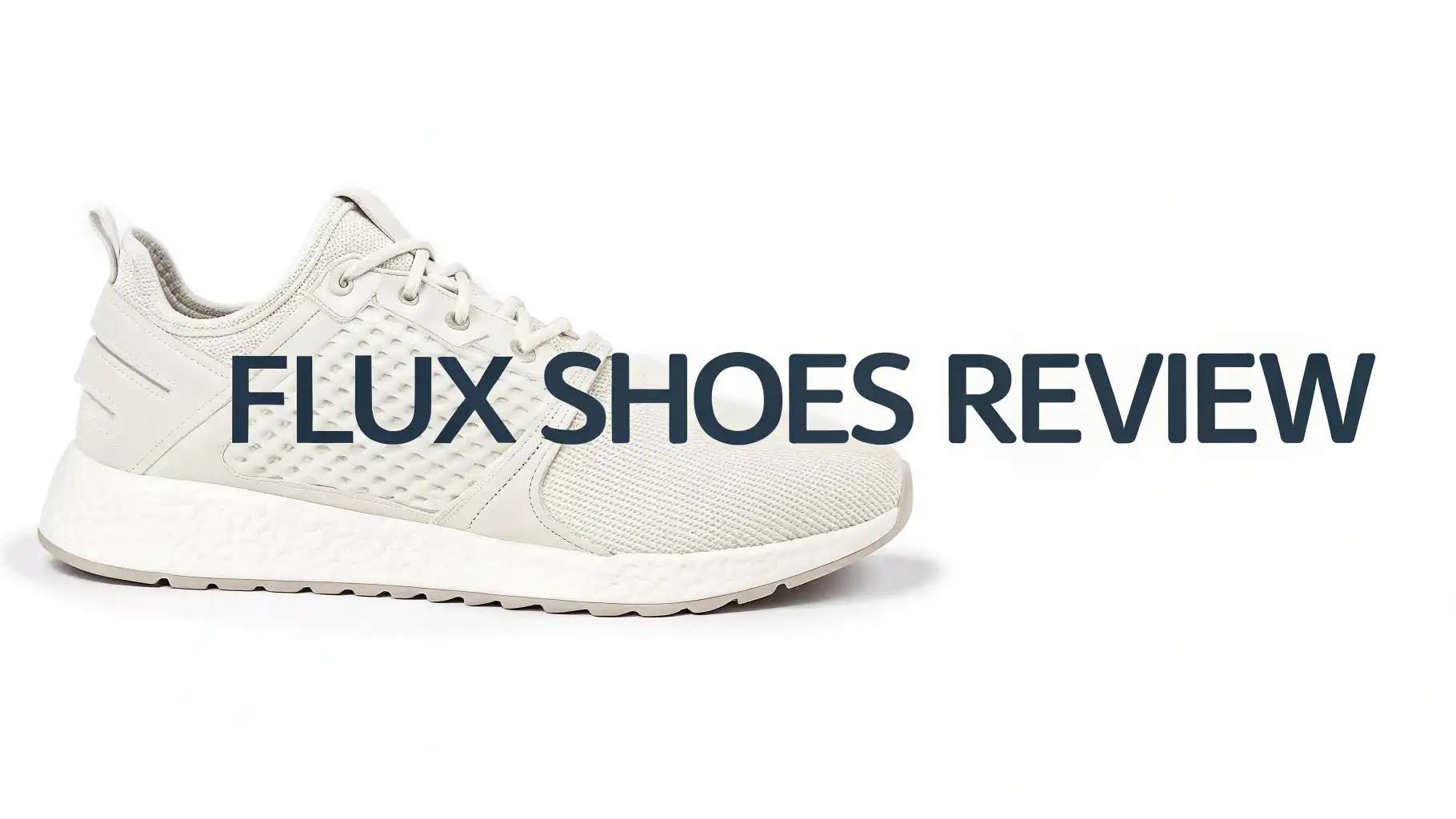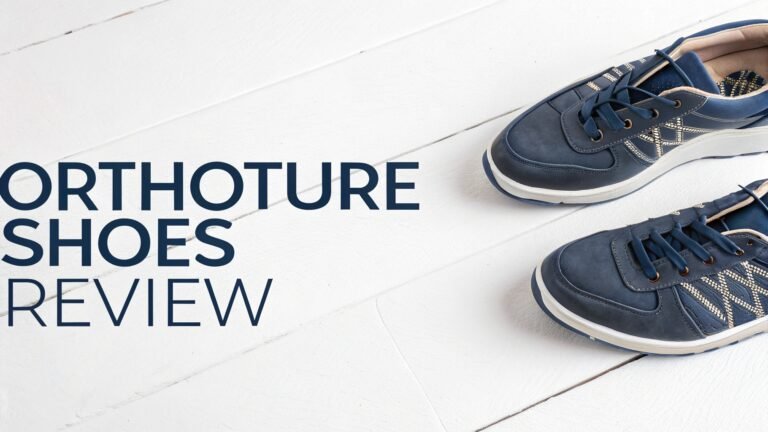Flux Shoes Review: Are These Zero Drop Shoes Worth Your Investment?
Finding the perfect pair of shoes can feel like searching for a needle in a haystack. With so many brands competing for your attention, it’s hard to know which ones deliver on their promises.
Flux shoes have been making waves in the minimalist footwear community since their launch in 2020.
But do they live up to the hype? This comprehensive Flux shoes review will dive deep into everything you need to know about this innovative brand.
Key Takeaways
Before we dive into the detailed review, here are the most important points about Flux shoes:
- Zero Drop Design: All Flux shoes feature a 0mm heel to toe drop, promoting natural foot movement and better posture during walking and running activities
- Wide Toe Box Construction: The shoes provide ample room for toe spreading, making them ideal for people with wider feet or those seeking more natural foot positioning
- AdaptSol Technology: Features over 100 textured nodes in the insole designed to massage your feet while potentially providing grounding benefits through their Earth Link technology
- Versatile Performance: These shoes work well for casual running, cross training, and daily wear, though they may not be optimal for serious marathon training or heavy lifting
- Premium Pricing: Expect to pay between $130 to $150 for most models, positioning them in the mid to high price range for minimalist footwear
What Makes Flux Footwear Stand Out
Flux Footwear entered the competitive shoe market with a unique approach to foot health. The company was founded in 2020 by a team that includes former Reebok designers and wellness enthusiasts who wanted to create footwear that supports natural foot function.
The brand’s philosophy centers around biohacking and natural movement. Unlike traditional athletic shoes that often restrict foot movement, Flux shoes are designed to work with your body’s natural biomechanics. This approach appeals to people interested in functional fitness and holistic health.
What sets Flux apart from competitors like Altra is their focus on grounding technology. The Earth Link feature incorporates carbon infused rubber and metal coated webbing that supposedly connects you to the earth’s natural electrical field. While the scientific evidence for these claims remains limited, many users report improved comfort and energy levels.
The company has built a loyal following among ultra runners, crossfit athletes, and barefoot running enthusiasts. Their marketing strategy of encouraging people to “ditch your Altras” has created quite a stir in the zero drop community, positioning them as a direct competitor to established brands.
Design and Construction Features
Flux shoes showcase thoughtful engineering in every component. The AdaptKnit upper uses a breathable knit material that provides structure while allowing natural foot movement. This construction creates a bootie style fit that many users find comfortable for all day wear.
The zero drop platform is perhaps the most significant design element. This means the heel and toe sit at the same height, encouraging a more natural gait pattern. For people transitioning from traditional shoes, this can improve posture and reduce joint stress over time.
The outsole features Trinity Tread technology that provides excellent grip across multiple surfaces. The rubber compound is non marking, making these shoes suitable for both outdoor adventures and indoor gym workouts. The tread pattern balances traction with durability, performing well on trails, roads, and various terrain types.
One unique aspect is the removable AdaptSol insole with over 100 textured nodes. These bumps are designed to provide a massaging effect while walking or running. Some users love this feature, while others find it takes time to adjust to the unusual sensation.
Performance Analysis for Different Activities
Running Performance
For recreational runners, Flux shoes offer a comfortable experience for distances up to 6 miles. The AdaptFoam midsole provides good energy return and responsiveness, making them suitable for tempo runs and interval training. The wide toe box allows for natural toe splay during push off phases.
However, serious marathon runners might find limitations. The shoes feel heavier compared to racing flats and lack the structured support that some runners need for longer distances. The weight of approximately 12 ounces can become noticeable during extended runs.
The zero drop design works best for runners who are already adapted to this style or those willing to transition gradually. Heel strikers may experience some discomfort initially as their running form adjusts to the more natural foot strike pattern.
Cross Training and Gym Use
Flux shoes excel in cross training environments. The dense midsole provides adequate stability for light to moderate weightlifting, while the wide toe box offers better ground connection during functional movements. The shoes work well for kettlebell workouts, bodyweight exercises, and circuit training.
For serious powerlifting or heavy squats, these shoes have limitations. The midsole can compress under loads exceeding 200 pounds, potentially affecting stability and safety. Most users report good performance up to moderate weights but recommend dedicated lifting shoes for heavy barbell work.
The breathable upper makes these shoes comfortable during high intensity workouts. The bootie construction allows for easy on and off between exercises, which many gym goers appreciate during varied training sessions.
Daily Wear and Walking
Perhaps where Flux shoes shine brightest is in everyday wear scenarios. The comfortable fit and casual appearance make them suitable for long walks, errands, and general daily activities. Many users report all day comfort without the fatigue often associated with traditional shoes.
The AdaptKnit upper provides excellent breathability in warm weather, while the massaging insole creates an interesting sensory experience during walking. The wide toe box prevents the cramped feeling common with narrow dress shoes or athletic shoes.
For travel and casual use, these shoes offer versatility that many users appreciate. They work well for airport walking, sightseeing, and general tourism activities where comfort takes priority over specific performance features.
Sizing and Fit Considerations
Getting the right size in Flux shoes is crucial for optimal performance. Most users find that ordering their true size works well, as the wide last accommodates various foot shapes without feeling oversized. The generous toe box means people with wider feet often don’t need to size up.
For those with narrow feet, the fit might feel loose even in smaller sizes. The bootie construction and knit upper don’t provide the same lockdown that traditional laced shoes offer. Some narrow footed users report heel slippage during more dynamic activities.
The break in period varies among users. Some people find immediate comfort, while others need several weeks to fully adapt to the zero drop platform and textured insole. Starting with shorter wearing sessions and gradually increasing use helps with the transition process.
Half sizes are not available in all models, which can create fitting challenges for some people. If you typically wear half sizes, most experts recommend sizing down rather than up, especially if you have average to narrow feet.
Durability and Long Term Use
Real world durability testing reveals mixed results for Flux shoes. Many users report excellent longevity with proper care, while others experience premature wear in specific areas. The knit upper tends to hold up well with normal use but can snag on rough surfaces.
The outsole rubber generally provides good durability across various surfaces. Users who primarily walk on concrete and asphalt report several months of good wear before seeing significant tread reduction. Trail runners may see faster wear depending on terrain roughness.
Some users report midsole compression after extended use, particularly heavier individuals or those who use the shoes for high impact activities. The AdaptFoam material seems to maintain its properties better with varied use rather than repetitive stress from single activities.
The removable insole is a durability advantage, as it can be replaced independently if the textured surface wears down. However, some users report that the grounding elements may degrade over time, potentially affecting the claimed health benefits.
Price Point and Value Assessment
Flux shoes typically retail between $130 and $150, positioning them in the premium segment of the minimalist shoe market. This pricing competes directly with established brands like Altra and other zero drop options, making value a key consideration for potential buyers.
Compared to traditional athletic shoes, the price point reflects the specialized construction and proprietary technologies. The grounding features, wide toe box design, and quality materials justify the cost for users who value these specific attributes.
However, the price becomes questionable when durability issues arise. Some users report needing replacement within 6 to 12 months, which significantly impacts the overall value proposition. For the price point, many expect longer lasting performance.
The direct to consumer model means limited opportunities for discounts or sales. This contrasts with major brands that frequently offer promotional pricing, making Flux shoes a bigger initial investment for budget conscious consumers.
Customer Experience and Support
Flux Footwear’s customer service receives mixed reviews from users. Some customers praise the responsive support team and helpful sizing guidance, while others report frustration with return policies and exchange procedures.
The company offers a limited return window and charges restocking fees for exchanges, which some customers find unreasonable given the premium pricing. This policy creates hesitation for first time buyers who want to test the fit and comfort.
Shipping and delivery generally receive positive feedback, with most orders arriving within expected timeframes. The packaging reflects the premium positioning, though some customers prefer more sustainable packaging options.
Warranty coverage is standard for the industry, covering manufacturing defects but not normal wear and tear. Some users report difficulty getting warranty claims approved, particularly for issues they consider premature wear.
Comparing Flux to Major Competitors
When compared to Altra shoes, Flux offers similar zero drop benefits with potentially better durability. Altra users who experience frequent sole separation often find Flux construction more reliable. However, Altra provides more model variety and established track record.
Against Xero Shoes, Flux offers more cushioning and conventional appearance. Xero focuses on true minimalism, while Flux provides a middle ground approach that appeals to people transitioning from traditional shoes.
Vivobarefoot comparison shows Flux as more affordable with similar philosophy. Vivobarefoot shoes often cost significantly more, making Flux an attractive alternative for budget conscious buyers seeking similar benefits.
Traditional brands like Nike and Adidas offer completely different experiences. Flux shoes prioritize natural foot function over performance enhancement, appealing to users focused on long term foot health rather than immediate athletic performance.
Health Benefits and Wellness Claims
Flux heavily markets the health benefits of their Earth Link grounding technology. The company claims reduced inflammation, improved sleep, and better stress management through electrical connection to the earth. However, scientific evidence for these specific claims remains limited.
The zero drop design does offer documented benefits for many users. Improved posture, reduced heel striking, and stronger foot muscles are commonly reported outcomes. These benefits align with established research on natural foot mechanics and barefoot walking.
Many users report immediate comfort improvements, particularly those transitioning from shoes with elevated heels and narrow toe boxes. The wide toe box allows for natural toe spreading, which can reduce bunions and foot pain over time.
However, the transition period can involve temporary discomfort as feet adapt to the new mechanics. Some users experience calf soreness, arch fatigue, and general foot muscle tiredness during the adjustment phase.
Common Issues and Potential Drawbacks
Several recurring complaints appear in user reviews. The textured insole creates blisters for some users, particularly during longer activities. The massaging effect that some people love becomes irritating for others during extended wear.
The wide toe box, while beneficial for many, creates fitting issues for people with narrow feet. The lack of secure lockdown can cause instability during lateral movements, making these shoes less suitable for sports requiring quick direction changes.
Weight concerns affect performance oriented users. At over 12 ounces, these shoes feel heavy compared to racing flats or lightweight trainers. This can impact running efficiency and overall athletic performance for competitive athletes.
The limited size options without half sizes creates fitting challenges. People who typically need half sizes often struggle to find the perfect fit, leading to returns and exchanges that frustrate both customers and the company.
Frequently Asked Questions
Are Flux shoes good for people with wide feet?
Yes, Flux shoes feature an extra wide toe box that accommodates wide feet comfortably without requiring larger sizes.
How long does it take to adjust to zero drop shoes?
Most people need 2 to 4 weeks to fully adapt to zero drop shoes when transitioning from traditional elevated heel footwear.
Can you wear Flux shoes without socks?
While possible due to the breathable materials, most users prefer wearing socks for hygiene and comfort during extended wear.
Do the grounding benefits actually work?
Scientific evidence for grounding benefits remains limited, though many users report subjective improvements in comfort and well being.
Are Flux shoes machine washable?
Yes, most Flux models are machine washable, making them easy to clean and maintain with regular use.
How do Flux shoes compare to Altra for running?
Flux shoes offer similar zero drop benefits with potentially better durability, though Altra provides more specialized running models.
What is the return policy for Flux shoes?
Flux offers returns within a limited window but charges restocking fees for exchanges, which some customers find restrictive.
Do Flux shoes work for people with plantar fasciitis?
The zero drop design and wide toe box may help some people with plantar fasciitis, but individual results vary significantly.

Mia Smith is the founder of Shoe Storyteller, a blog that celebrates the art and stories behind shoes. With a passion for fashion and a flair for storytelling, Mia brings a unique perspective to the world of footwear.






